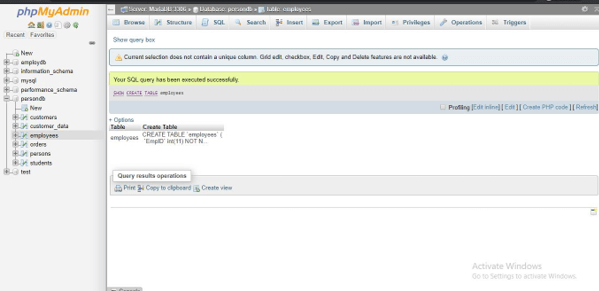

The # comments that you see above each property: Each property in the ProductĮntity can be mapped to a column in that table. Objects to a product table in your database.

And soon, you'll be able to save and query Product " SQLSTATE: Syntax error or access violation:ġ071 Specified key was too long max key length is 767 bytes". That any column of type string and unique=true must set its String columns with 255Ĭharacter length and utf8mb4 encoding surpass that limit.

InnoDB tables in MySQL 5.6 and earlier versions. You can view EDUCBA’s recommended articles for more information.There is a limit of 767 bytes for the index key prefix when using We hope that this EDUCBA information on “MySQL ALTER TABLE Add Column” was beneficial to you. The actual default value assigned depends on factors such as the strict SQL mode and the values assigned to other SQL variables. For example, a VARCHAR datatype column may have an empty string (“”) as the default value, while an INT or INTEGER datatype column may have a default value of 0 (zero). The default value can be NULL or a value based on the column’s data type. In MySQL, the database will assign a default value if you don’t specify default values for a newly added column. This allows us to define the new column’s data type and specify constraints and restrictions. With the ALTER TABLE command, we can use the ADD statement to add one or more columns to existing tables. We can use the ALTER TABLE command to add, modify, and drop the table’s columns and rename the columns and the table names. You can check this value by executing the following query: SELECT gives the following output on my remote server for which we are using the client-side tool named SQL yog that is used above – The default value of the newly added columns depends on the value of the SQL mode. The default value of the integer datatype column is 0, varchar, i.e., the string is “” blank and NULL for a date. Let us now retrieve the records from the developers’ table to view our changes by executing the following select query – SELECT * FROM 'developers' Īll the new columns are added at the positions we specify and are initialized to their default values based on their data types. To check the default value assigned to a column in MySQL, you can execute the following query: SELECT gives the following output on my command-line database server.

Let us retrieve the records in the educab_writers table and see the value for the added columns for existing records – select * from educba_writers Īll column values have a default value of NULL. Let us describe the educba_writers table once again to check whether our columns are added successfully by using the following query statement – DESC educba_writers We can write the ALTER TABLE query with ADD statement in it to add two columns in the following way – ALTER TABLE educba_writersĮxecution of the above query statement gives the following output on the command line – The datatype of the rate will be decimal with precision and scale as (5,2), and the datatype of joining_date should be DATE. We want to add two columns named rate and joining_date columns to the educba_writers table using the ALTER TABLE command. The educab_writers table consists of the following columns: DESC educba_writers The default position where the new column is added is at the last. FIRST represents that the new column will be placed in the beginning, while AFTER signifies the position of the new column after the name_of_existing_column named column in the table. name_of_existing_column – We can specify the column position we are adding concerning the existing position of the columns in the table named name_of_table by using the FIRST and AFTER keywords.details_of_column – This helps specify the details and definition of the new column we are adding, including the column’s datatype and other attributes such as NULL or NOT NULL, UNIQUE, etc.name_of_new_column – This is the name of the new column we add to the table.name_of_table – This is the name of the existing table in which we wish to add a new column using the ALTER query.The syntax of adding the columns using the ALTER statement is as follows – ALTER TABLE name_of_table We can add one or more columns in the existing table by using the ALTER TABLE statement with the ADD command. Hadoop, Data Science, Statistics & others ALTER TABLE statement with ADD command


 0 kommentar(er)
0 kommentar(er)
